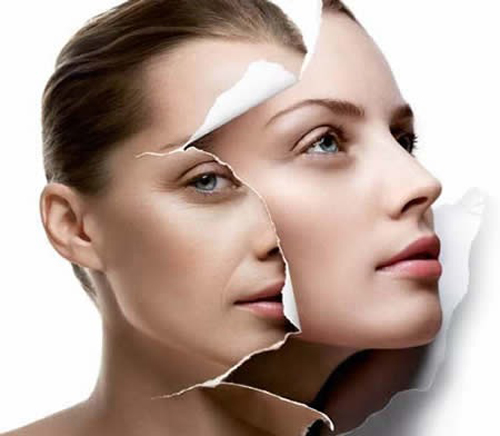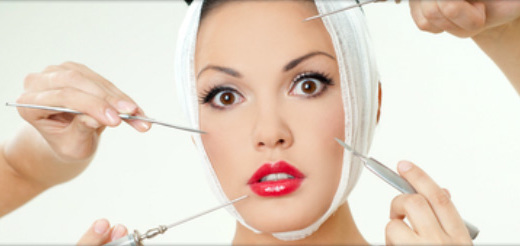Doctors begin using collagen to help eliminate facial lines
Can you please give me whatever information you have on injectable collagen that is used to remove facial lines? I have read of it being used in the United States and would like to know if it is in use yet here in Toronto.
Despite great advances in cosmetic surgery, such problems as acne scars, surgical scars, deep frown lines, deep smile lines and other skin depressions have, until very recently, been impossible to correct adequately. However, a new technique for implanting highly purified soluble collagen just beneath the surface of the skin promises to change all that. Known as Schering Collagen Implant, the new system was clinically tested for more than six years in the United States and received safety clearance from the Food and Drug Administration over a year ago. It has been available in Toronto for the past five months and is used by such prominent cosmetic surgeons as Dr. Michael Bederman.
Collagen – the name is derived from the Greek word for glue – is the fibrous protein found in the body’s connective tissue. A complex biopolymer, which is so ubiquitous that it makes up almost a third of the body’s protein, collagen is the skin’s chief structural building block. The breakdown of collagen molecules within the dermis occurs with age and appears to result in wrinkling, sagging contours and a general slackening of the face.
Scientists have long believed that if they could find a way to prevent molecular breakdown from taking place, or find a way of restoring insoluble collagen to its more youthful state – perhaps by introducing insoluble collagen into the skin – then one could do much to restore a youthful look and feel to an aging face. Of course a number of skin creams contain collagen in various forms, but, because of the way it is incorporated into these creams, it cannot penetrate beyond the skin’s outermost layers. Medically, collagen taken from the skin of cows and pigs and then specially treated to purify it, has been used as dressings to help heal areas of the body damaged by burns or abrasions. It has also been used in the manufacture of heart valves. For foreign collagen – collagen taken from animal sources – appears to have the remarkable ability, when introduced into the body, of integrating itself into the body’s own tissue. But, until recently, the collagen used in these medical techniques was neither fine enough nor pure enough to be administered beneath the skin to correct cosmetic defects.
An odorless, white substance which has the consistency of soft paste, Schering Collagen Implant is a form of emulsified cattle skin which has been highly purified and treated to minimize its antigenic potential – that is, to render it unlikely to cause allergic reactions. Suspended in a saline solution that also contains a local anaesthetic, collagen comes to the physician sterile and ready for use in very fine syringes which the surgeon injects into those areas of the face to be treated.
To obliterate deep lines, the surgeon places the needle in the dermis at one end of the furrow, slides it carefully under the skin to the end of the depression, then slowly draws it back again, injecting collagen – which fills in the crease – as he does. This process is then repeated, this time as close to the skin’s surface as possible. Because the implant contains a local anaesthetic there is little discomfort; and the whole procedure, which takes only a few minutes, can be carried out in the surgeon’s office. As the collagen implant fills the depression and raises the skin to the level of the surrouding tissue, it causes considerable redness and swelling which lasts a few hours. After two weeks the foreign collagen will have actually been integrated into the body’s own tissue. Because of this, unlike silicone which has been used for implants in the past – mostly unsuccessfully – there is no possibility of the implanted material migrating.
Depending on the patient, and on the kind of lines being treated, two to six treatments are usually required to achieve maximum results and results last from six months to two years. Then one usually needs occasional “touch up” injections to maintain the effect. This is particularly true in the case of smile and frown lines which muscle movement continue to re-etch into the skin.
Collagen implants can also be used to improve the contour of the lips in cleft palate patients and for filling in skin grafts. What they cannot correct are ice pick scars, fine under-eye lines and chicken pox or smallpox scars.
Can you please tell me how to determine which shampoo is right for me? There are so many on the market these ddays, all making such wild claims, that it is very difficult to know which type to buy.
The questions to ask before determining which shampoo is right for you, are these: First, is your hair chemically treated – has it been colored, permed, or straightened? Second, do you washyour hair because it is dirty, or do you wash it – perhaps every day – just to give your hairstyle a lift? If you have chemically treated or fragile hair, it is always best to choose a neutral or acid shampoo. Look for the bottle labeled “For Tinted or Bleached Hair” – not only if your hair has been colored, but if it has been chemically processed in any way. Hair that has been processed has a structural alteration in the cutible – the outer layer of the hair shaft – that makes the hair quite porous. An acid or neutral shampoo shrinks these cuticle openings so hair is easier to manage.
If your hair is not fragile or chemically treated and you shampoo simply because it needs a good cleaning, it really doesn’t matter which shampoo you use – any detergent shampoo will do a wonderful job. And which shampoos are detergent shampoos? Nearly all the popular brands – contrary to what they may claim. The main ingredient in most popular shampoos is water – nearly eighty per cent in most cases – followed by detergent. The effectiveness of any shampoo is determined by the detergent it contains, not by any other factor such as color or consistency.
I was most interested in your recent column on sensitive skin, but have one question: Exactly which product ingredients should you avoid if you have sensitive skin or are allergy-prone? The ingredients which most often cause allergic reactions in those with sensitive skin are fragrance, lanolin and phenylenediamine. Lanolin, though it may cause allergic skin rashes, is not usually used in pure form today because of its allergy-producing potential. Phenylenediamine, on the other hand, is a chemical found in most home and beauty salon hair dyes, and for this reason, a skin patch test should be administered before any permanent hair color is used.
If you are allergy-prone, it would be wise to use only those cosmetics and beauty preparations that have been allergy tested. Clinique products, for example, are 100 per-cent fragrance-free and allergy-tested on 600 people, eleven times each.
My hair always looks faded during winter. I’d rather not use a permanent or even semipermanent hair color and henna is just too messy. Is there anything left that will give a color lift to my hair? If you’re a natural or color-treated brunette, mix a cream conditioner (Humectress by Nexus is a good one to try) with very strong coffee, preferably expresso. Wash your hair, dry it completely, apply the mixture and cover it with plastic wrap (if your hair is processed, apply the mixture to damp hair instead). Sit under the dryer for 10 minutes, then rinse. To add color to faded blonde hair, follow the same procedure, substituting honey-colored fruit juices, such as apricot or peach concentrate, for the coffee.
For quite some time I lined the inside of my lower lids with black eyeliner pencil. However, I finally decided that this practice actually seemed to close up my eyes, making them look smaller than they really were. Do you know of an easy makeup trick that will make my eyes appear larger? Yes. Line the inside of your lower lids with white eyeliner pencil. This makes your eyes look considerably larger since there appears to be more eyeball showing.
You may be interested to know that you are quite correct in focusing attention on your eyes. In a British study, researchers had 40 people write description of photos of 100 faces. Participants in the study mentioned nine facial features most often: eyes, followed by hair, nose, mouth, eyebrows, chin, ears, forehead and face shape, in that order.
Another study asked, “What facial feature draws your glance and holds your attention?” Two-thirds said “eyes.”

